You're using an outdated browser. Please upgrade to a modern browser for the best experience.
Please note this is an old version of this entry, which may differ significantly from the current revision.
Subjects:
Others
The entry emphasizes on VUV and IR radiation, since recent experimental efforts has been devoted to these wavelength ranges since they contribute mostly to CO2 plasma radiation. The main objective of the study is to identify the most attractive datasets for future crosscheck comparisons with the results obtained during future test campaigns with ESTHER shock-tube.
- Radiation
- CO2
- Datasets
- VUV
- Infrared
- Mars
- Venus
- Ground tests
1. Introduction
Radiation measurements in CO2 plasma flows are of interest for different aerospace applications. In propulsion, their investigation is necessary to study the combustion process in engines and to analyse exhaust plumes. Concerning atmospheric entries, they are key issues for planets such as Mars and Venus, since CO2 is a major component of their atmospheres. Radiation from species formed by CO2 dissociated flows, covers a wide range of wavelengths since some systems radiate in the vacuum ultraviolet (VUV) and other in the infrared.
Measurements in VUV and infrared bands cover a range of wavelength of 62 up to 200 nm, and beyond 700 nm respectively. In hypersonic flows, radiative heating can be significant in both of these spectrum bands depending on plasma composition. However, VUV emission measurement is difficult to achieve due to the instrumentation limitations. Usually dedicated deuterium lamps [1] are used for such measurements. These devices required a specific calibration based on advanced photon metrology [2]. VUV measurements are not only relevant for hypersonic applications, but are also of interest for nuclear fusion, photochemistry, and exobiology; more particularly infrared measurements are a key issue for propulsion systems.
In the following, a literature survey of available data for CO2 radiating flows is presented. First, the data related to propulsion applications are presented, then experimental data obtained for Venus and Mars entry conditions are surveyed. The survey activity benefits from previous studies carried out for Mars entry [3] and shock facilities [4], as well as shock-tube data for Mars entry [5]. The available heritage from previous ESA TRP activities [6,7] has also been considered. In the frame of a research effort on CFD validation in CO2 environment, a large spectral database for CO2 radiation has been gathered, evaluated, and incorporated in the radiation tool PARADE [8,9]. The survey is mostly focusing on the results obtained in shock-tubes and expansion tubes. Data from plasma torches have been also considered; available spectra and measurements could be of interest even if they have been measured for much different flow conditions than those encountered within a shock-tube. The objective of the current study is to identify the most attractive datasets for CO2 radiation, in line with planetary entry, with a focus on VUV and IR contributions. These datasets will be of interest for assessing the future experimental data to be obtained during test campaigns in the European shock tube ESTHER [10]. ESTHER is a facility developed by an international consortium led by IST of Lisbon, under funding from the European Space Agency for supporting future exploration missions. It is a two-stage combustion driven shock-tube (see Figure 1) with laser ignition, with the capability to reach a shock velocity up to 14 km/s for Earth atmospheric entry. Specific instrumentation is going to be added to the facility, with a VUV capability for high-speed entries and a specific IR instrumentation for testing Mars entry conditions. The goal of the current effort is to support the development of this IR capability.

Figure 1. Sketch= of ESTHER shock-tube (credit IST).
2. Venus
2.1. Test Conditions
Several experimental studies have been focused on radiation measurements for Mars aerocapture and Venus entry conditions. Experimental campaigns for Venus entry have been carried out in EAST shock-tube by Martinez [1], and Cruden et al. [17,18]. The calibration of the deuterium lamp selected for the VUV measurements is detailed in [1]. In these studies, a 96.5 CO2 and 3.5 N2 atmosphere was considered for Venus, while a 96 CO2 and 4 N2 atmosphere was retained for investigating a Mars aerocapture in [1]. A comparison between the conditions tested in [17] and the some entry probe trajectories is shown in Figure 7. Experiments were performed from the VUV to IR ranges, from 120 up to 1700 nm at high velocities, in [1], and up to 5000 nm for low velocities, in [17,18].
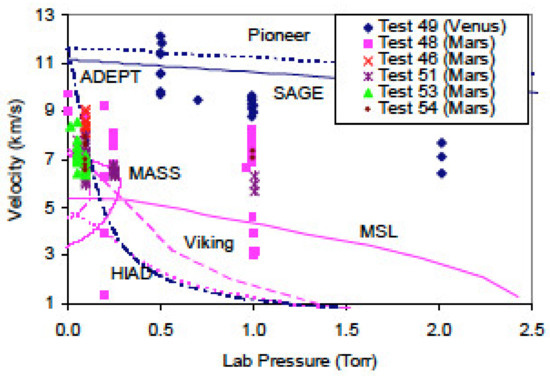
Figure 7. Summary of tests carried out in EAST for Mars ad Venus entries from 2008 to 2012 [17].
4.2. Available Datasets
The study carried out by Martinez [1] focuses more particularly on CN, and C2 and their related rotational temperatures. The results obtained for the rotational temperature as function of the shock velocity are displayed in Figure 8. They highlight the increase of the rotational temperature with the shock velocity. The spectra from 120 to 1520 nm, obtained by Martinez [1] for both Mars aerocapture, at 6.5, 7, and 8.5 km/s, and Venus entry conditions, at 9.5, 10.6, and 11.4 km/s, are shown in Figure 9. Datasets cover VUV up to NIR radiation, with the major contribution in the VUV. The VUV range is dominated by the CO(4+) system, two carbon atomic lines are also present at 193 and 248 nm.
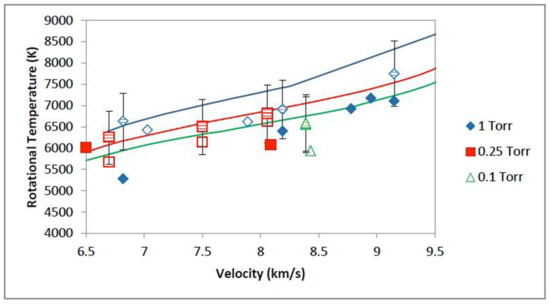
Figure 8. Rotational temperature for CN and C2 systems (from [1]).
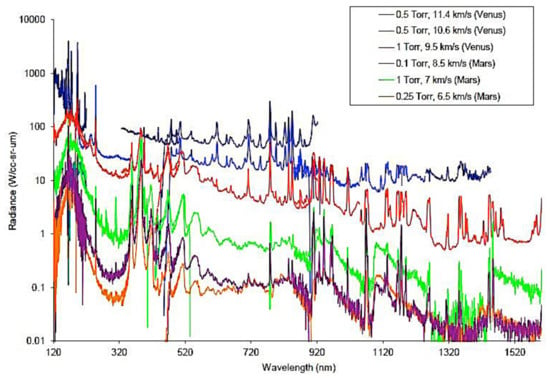
Figure 9. Mars and Venus spectra obtained in [1].
Other test campaigns for Venus entry conditions (3–12 km/s 0.1–2 Torr) were conducted in EAST [17,18] spectral radiance was investigated from VUV through mid-IR (120–1650 nm, and 3000–5000 nm). Tests conditions are plotted in Figure 7. Resolved spectra of the CO 4th positive band in the VUV was also reported for the first time. Measurement of CO2 molecular vibrational radiation was also attempted for low velocities. The contributions of the different spectral regions from VUV to IR, to the total radiance for Venus and Mars entry conditions are resumed in Figure 10. Mid IR was only investigated at low velocities (3–4 km/s). For the other measurements medium resolution imaging was performed for C2 Swan, CN Violet, O 777 nm triplet and C 193 and 248 nm lines.

Figure 10. Contributions to the different spectral regions to the total radiance for different Mars (96% CO2, 4% N2) and Venus (96.5% CO2, 3.5% N2) entry conditions [17].
The observed results are similar to those reported in [1] that can be seen in Figure 9. One of the main radiator is CN radiating 22% less in Venus mixture than in Mars mixture, all other parameters being equal.
The analysis of the different tests shows that below 10 km/s, there is a strong emission from 120–300 nm, due to the CO 4th positive system reaching a maximum at 160 nm, this is the dominant feature in the spectrum. Other major contributors to radiation emission are, NO, strong atomic lines of C, O, and N, and CN Violet, with the four bands at 359, 388, 422, and 461 nm, corresponding to CN Violet system. The radiation intensity emitted by the CN Violet system, increases with the velocity up to 10 km/s, then decreases and vanishes, since the energy present in the flow is sufficient to dissociate the molecule. Swan band for C2, in between 500 and 700 nm, is also present in Figure 9, but at a much weaker level than CN. Like for CN, C2 contribution disappears above 10 km/s due to dissociation effects. The same phenomenon applies to the CN red system, which is strong in the NIR above 700 nm below 9 km/s and vanishes when the shock velocity increases. With the increase in velocity, the atomic lines become visible, as highlighted in Figure 9, with the oxygen atomic triplets at 777 and 1130 nm, and the C atomic lines and 193, 248, and 1069 nm. However, the main features when increasing the velocity is the growth of the background continuum radiation certainly due to interactions between the electrons and atomic and molecular species that include free-bound and bremsstrahlung processes.
The contributions to the total radiance for different wavelength bands have been computed by Cruden et al. [17] and are shown in Figure 10. The first contribution for all pressures and velocities is from VUV to far UV wavelengths, in between 125–215 nm, with 45 to 58% of the total radiation. At these wavelengths the radiation is mostly produced by the CO 4th positive system and from NO. The IR radiation above 900 nm is small with around 10 % of the total radiation. The radiation in the visible domain can be mainly attributed to the CN red system. The region in between 330 and 480 nm, contributes to 35% of the total radiation at 6.5 km/s. This strong contribution decreases at higher velocities, with 12% at 11.5 km/s due to the dissociation effects that are strong. Radiation from C2 Swan, 480–700 nm is for the different cases lower than 10% of the total radiation.
Measurements of C2 and CN bands systems have been used to compute rotational temperature; corresponding results are plotted in Figure 11. Finally, the tests have been reconstructed with NEQAIR [19]. Comparisons between experimental data and numerical calculations for different spectra are shown in Figure 12, Figure 13 and Figure 14. Figure 14 shows the comparisons between EAST data and NEQAIR calculations, of the integrated radiance from carbon lines and oxygen triplet, for the different studied conditions.
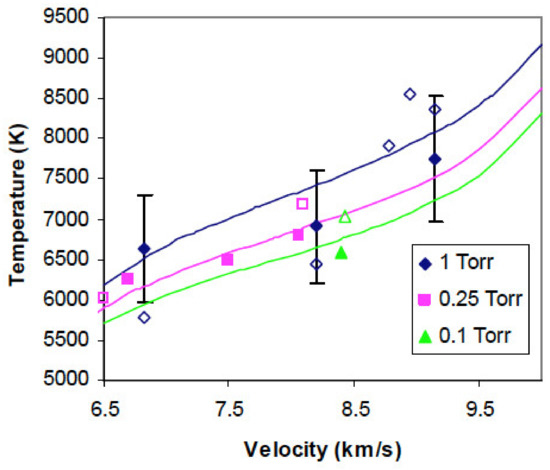
Figure 11. Rotational temperature for Venus and Mars conditions [17].
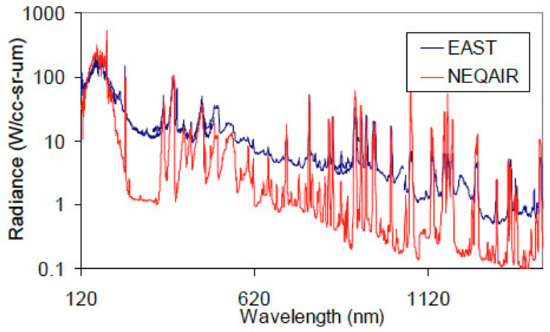
Figure 12. Comparison between EAST data and NEQAIR for Venus entry at 1 Torr and 9.5 km/s [17].

Figure 13. Comparison between EAST data and NEQAIR for Venus at 0.5 Torr: a) VUV spectrum at 11.4 km/s; b) VIS-NIR spectrum at 10.5 km/s; c) NIR spectrum at 11.4 km/s [17].

Figure 14. Integrated radiance from carbon lines (193 and 248 nm) and oxygen triplet (777 nm) (EAST experimental data as solid points; NEQAIR calculations as lines) [17].
Radiation emission spectra from VUV to mid-IR for Earth, Venus, and Mars entry conditions have been compared in [20] they are plotted in Figure 15. In the same contribution, Cruden [20] has provided extensive details on the calibration of the different measurement techniques used for the test campaigns including the deuterium and mercury lamps for VUV and UV-VIS measurements respectively. Mercury lamp is used for spectral calibration using atomic line sources in UV-VIS, in the infrared, typically, Hg lamps are used for the same finality. For calibration below 300 nm, a deuterium source is frequently used; other options are possible (H2 or Ar arc lamps, Xe lamps, or hollow cathode discharges). Lamps are thermally driven, and as they are limited by the Planck curve they generally do not get hot enough for short wavelength ranges characteristic of V, and VUV radiation.
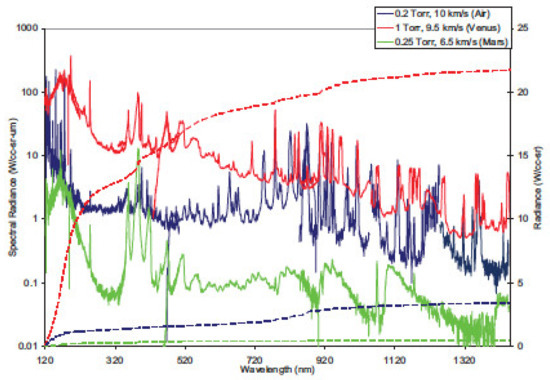
Figure 15. Equilibrium radiation spectra and total radiative flux (dashed lines) for Earth, Venus and Mars entry conditions [20].
3. Mars Entry
Since the Mars Premier project developed by CNES [3], ESA and CNES have fostered the activities of the European Radiation Working Group (ERWG) for improving radiation capabilities within Europe. In the frame of the working group activities, a test case has been dedicated to Mars entry [21]. The test case conditions are a pressure in between 0.1 and 1 Torr, a velocity range from 7 to 8 km/s and a nominal Mars atmosphere with 96% of CO2 and 4% of N2. They are reported in Figure 16 where the maps of different facilities as well as some existing datasets have been included [22]. The activities of the ERWG have supported most of radiation activities in Europe performed during 20 years. Additionally, with the closure of the TCM2 shock-tube in Marseilles, and due to the delay needed for the design and manufacturing of the ESTHER shock-tube, no similar facility was available in Europe during long years. As a consequence, the existence of the ERWG was an asset to maintain scientific capabilities in the field.
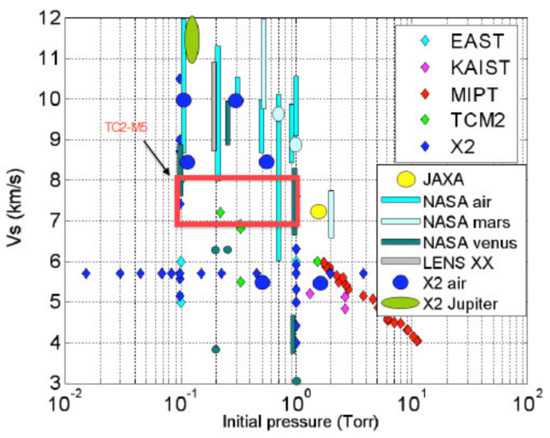
Figure 16. TC2 test conditions and facilities maps [22].
However, if a look is given at the global effort related to experimental campaigns for collecting VUV and IR CO2 radiation data most of the datasets have been obtained using the shock facilities available in Australia, Japan, and USA.
3.1. EAST
Among the available facilities such as shock and expansion tubes, for investigating radiation and chemical kinetics for Mars entry, EAST has been the most used and extensive test campaigns carried out for a wide range Mars entry conditions. Some of these test conditions have been summarized by Cruden [17] in Figure 7.
The high velocity range, corresponding to Mars aerocapture conditions, has been studied by Grinstead et al. [23] who have investigated the radiation and species kinetic relaxation for a Mars atmosphere at 0.1 Torr and a shock velocity of 8.6 km/s. Emission spectrum from VUV up to NIR has been measured and is displayed in Figure 17. The major source of radiance is from CO(4+) system even if CN violet, N2+ (1-) and C2 Swan systems as well as several atomic lines for carbon and oxygen are present. High-resolution spectra with corresponding spatial variation of radiance for CN violet and C2 Swan bands have been also published. Detailed VUV part of the spectrum is shown in Figure 18.
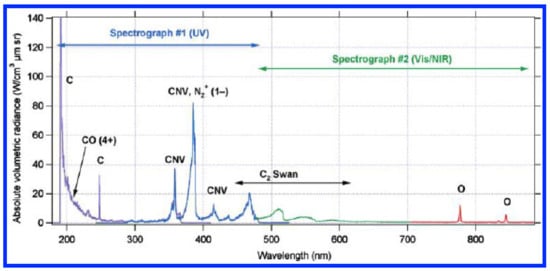
Figure 17. Emission spectrum for a Mars atmosphere (96% CO2, 4% N2) at 13.3 Pa and a shock velocity of 8.6 km/s (from [23]).
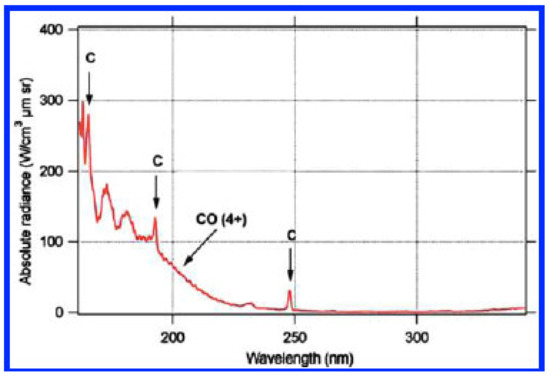
Figure 18. VUV part of the radiance spectrum for Mars at 0.1 Torr (13.3 Pa) and 8.6 km/s (from [23]).
In another contribution, Bose et al. [24] present some experimental data obtained for similar conditions, same pressure and temperature, a Mars atmosphere composition, and shock velocities ranging from 8.3 to 9 km/s. Three spectrographs were used for the test campaign covering wavelengths from the VUV to the NIR as shown in Figure 19. Test results have been compared with NEQAIR predictions; some of these comparisons are plotted in Figure 20, Figure 21, Figure 22 and Figure 23 for shock velocities of 8.3, 8.55, 8.63, and 9 km/s respectively.
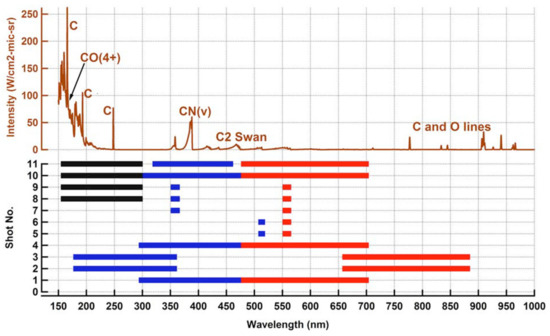
Figure 19. Predicted spectrum and wavelength coverage for the different shots using three spectrographs (from [24]).
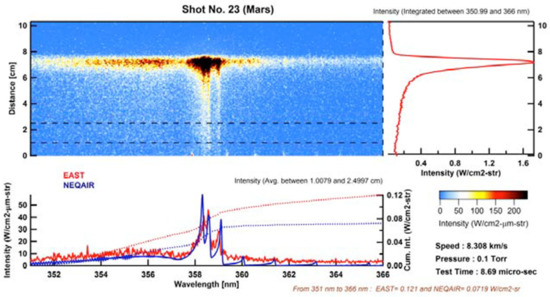
Figure 20. Comparison between NEQAIR calculations and EAST data in the UV range, at shock velocity of 8.55 km/s and a pressure of 0.1 Torr. The dotted curves are the cumulated intensity: measured in red and computed in blue (from [24]).
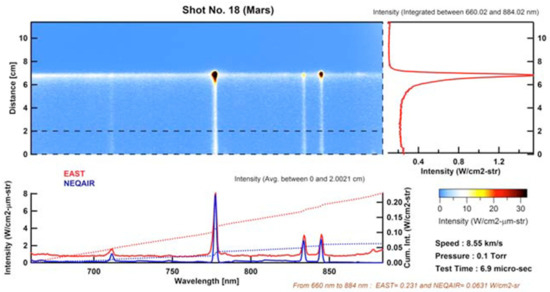
Figure 21. Comparison between NEQAIR calculations and EAST data in the NIR range at 0.1 Torr and a shock velocity of 8.55 km/s. The dotted curves are the cumulated intensity: measured in red and computed in blue (from [24]).
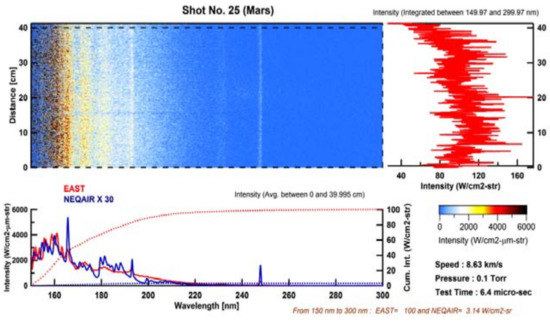
Figure 22. Comparison between NEQAIR calculations and EAST data in the VUV range at 0.1 Torr and a shock velocity of 8.63 km/s. The dotted curves are the cumulated intensity: measured in red and computed in blue (from [24]).
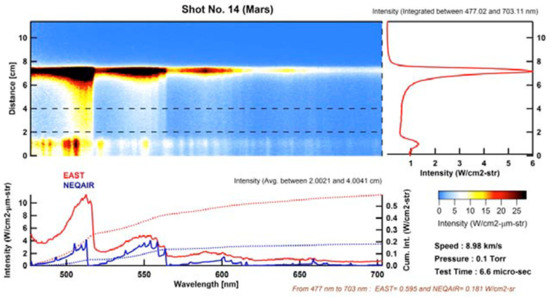
Figure 23. Comparison between NEQAIR calculations and EAST data in the VIS at 0.1 Torr and a shock velocity of 9 km/s. The dotted curves are the cumulated radiative intensity: measured in red and computed in blue (from [24]).
The Test Case 2 of the European Radiation Working Group has been also run in EAST [25]. Test Case nominal conditions are a nominal Mars atmosphere with 96% of CO2 and 4% of N2, velocities of 7, 7.5, and 8 km/s, and pressures of 0.1 and 1 Torr. Different runs were performed in EAST in these ranges and are reported in Figure 24 with the wavelength ranges covered by the instrumentation. The colour correspond to the data quality: yellow = low, dark green = medium, bright green = high. Measurements were performed from VUV to mid IR. Composite spectra for the nominal conditions of Test Case 2 are plotted in Figure 25 in a log scale. The emitted radiation increases by a factor in between 2 and 3, from 7 to 8 km/s, has highlighted in the same figure. As a consequence, if for most of the probe entries performed so far, radiation was not the key issue for the TPS design, this will not be the case if the aerocapture of a probe has to be performed.
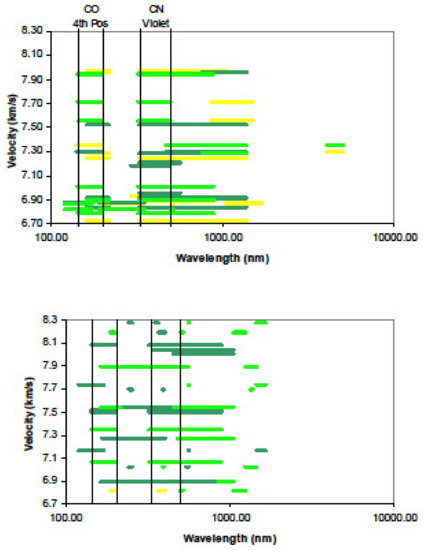
Figure 24. Spectral ranges covered during EAST tests (bottom 1 Torr, top 0.1 Torr (from [25]).
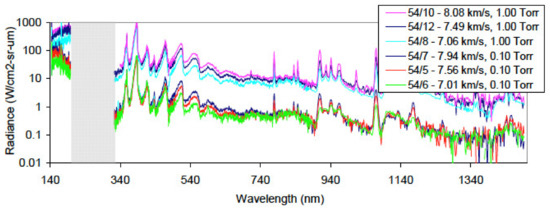
Figure 25. Composite spectra for TC 2 nominal conditions (from [25]).
More recently, Cruden et al. [26] have investigated different Mars-like mixtures in order to assess the radiance in CO2/N2/Ar systems. Shock tube tests were carried out for different mixtures: pure CO2, 96:4 CO2/N2, and 95.8/2.7/1.5 CO2/N2/Ar per mole. Tests were clustered around velocities and pressure of 6.5 km and 0.25 Torr, and 7 km/s and 0.1 Torr. Spectral range from VUV to mid IR has been covered and special care was given to CO (4+) and CN violet radiation. Measurements proved a low sensitivity of radiation to the presence of N2 except for CN Violet. Analysis of CN relaxation time has been performed using the CN Violet relaxation measurement, it has been found to be weakly dependent on the mixture composition. Some results are shown in Figure 26, for the spectral radiation in the CN Violet and as function of position at 6.5 km/s and 0.25 Torr, this for the three mixtures. Figure 27 summarizes the contribution to the radiation of the different bands (VUV, UV, and VIS-IR) for the different mixtures as function of velocity. The experimental data were also compared against the predictions performed with HARA non-equilibrium radiation code [27] in [28].
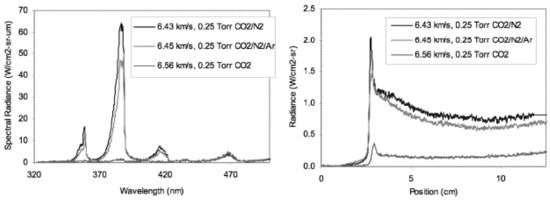
Figure 26. EAST data for different mixtures: Left: Spectral radiation; Right: Radiation as function of position (from [26]).
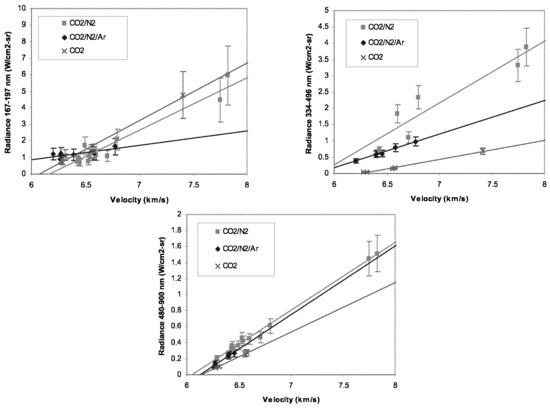
Figure 27. Steady state radiation for three Mars mixtures (pure CO2, 96:4 CO2/N2, and 95.7:2.7:1.6 CO2/N2/Ar) at 0.25 Torr: Top left: 167–197 nm, Top right: 334–496 nm, Bottom: 480–900 nm (from [26]).
Another recent contribution [29] has been more focused on mid-IR radiation that was investigated in EAST from 3 to 7.5 km/s and pressures from 0.2 to 1 Torr. Infrared radiation was found to be the highest at low velocity (3 km/s) and was decreasing with the velocity; the corresponding test conditions are summarized in Figure 28. Some data obtained for the 2700 nm and 4300 nm bands are reported hereafter. Figure 29 shows the spatial and spectral data at 3 km/s and 1 Torr in pure CO2 for the 2700 and 4300 nm bands. Figure 30 summarized the results obtained for the IR bands in terms of radiation heating as function of the shock velocity.
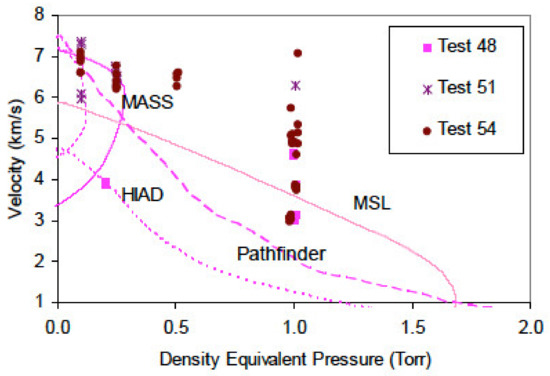
Figure 28. Summary of test conditions for which IR radiation was investigated in EAST with selected Mars entry trajectories (from [29]).
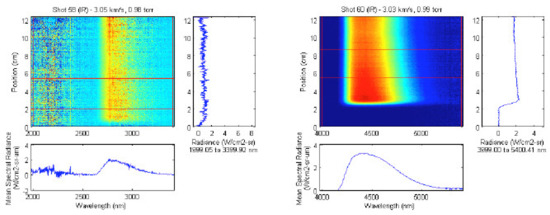
Figure 29. Spectral and spatial radiation measurements at 3 km/s and 1 Torr in pure CO2 (left: 2700 nm band, right 4300 nm band) (from [29]).
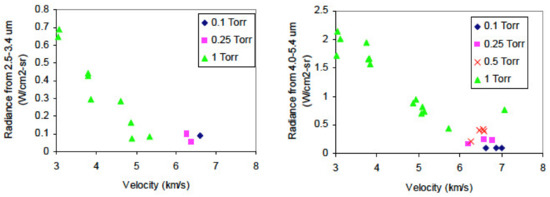
Figure 30. Radiation behind the shock for Mars entry conditions, at different velocities and pressures (left: 2700 nm band, right 4300 nm band) (from [29]).
3.2. JAXA
Several test campaigns with CO2 flows have been carried out in JAXA HVST shock-tube and HVET expansion tube [4]. First efforts [30,31,32] were dedicated to high velocity Mars entry, characteristic of a Mars aerocapture, later on, lower velocities [33] were investigated. First results [30] were obtained for pure CO2 at velocities of 7.1 and 7.3 km/s and pressure of 200 Pa. Radiation measurements were performed from VUV to NIR region, some of the data are plotted in Figure 31. In the same study, the C2 Swan band was also investigated, and obtained data shown apparently an equilibrium state. In NIR region, atomic lines for carbon and oxygen were observed (see Figure 31).
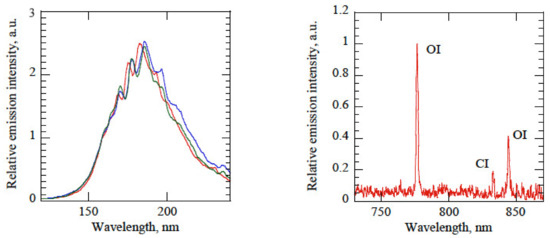
Figure 31. Left: Emission spectrum in VUV for the different runs at 7.1 and 7.3 km/s. Right: Emission spectrum in near region at 7.1 km/s and 200 Pa (from [30]).
Mars atmosphere with 96% of CO2 and 4% of N2 for high velocities was studied in [31]. Tests were performed at 7 km/s and 8.5 km/s for pressures of 1 and 0.1 Torr respectively. Radiation measurements were carried out from VUV to NIR focusing on CO(4+), CN Violet, and C2 Swan systems using two spectrometers. Results obtained using the different measurement systems have been compared; corresponding results for CN violet are shown in Figure 32.
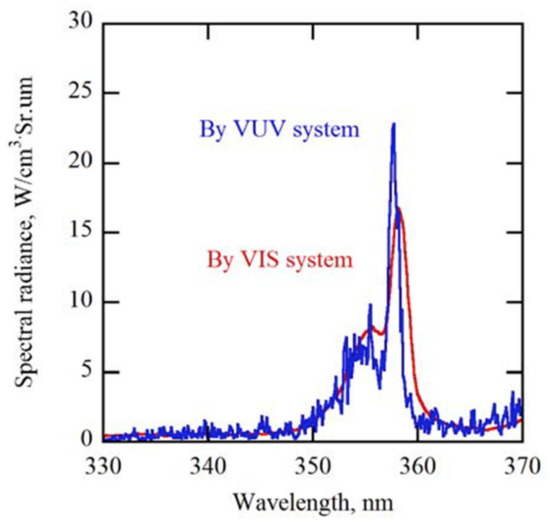
Figure 32. Comparison of the measured CN violet bands in UV region obtained using VUV and VIS spectrometers (from [31]).
Infrared radiation has been extensively investigated in [32] in which experiments were conducted from 2.5 to 7.5 km/s and a pressure of 1 Torr. Measurements were focused on radiation intensity, this last was found to be high at low velocity and to decrease up to 6 km/s, after this minimum, radiation intensity was increasing with the velocity; this is summarized in Figure 33.
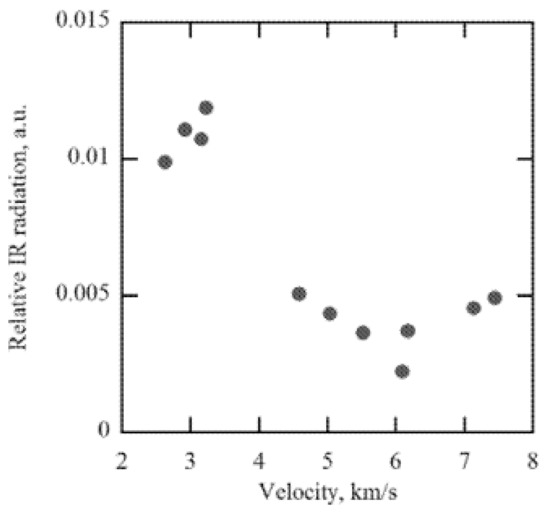
Figure 33. Infrared radiation intensity as function of shock velocity measured in HVST (from [32]).
The most recent test campaign [33] carried out by JAXA for CO2 radiation has been performed in the HVET expansion tube. Tests were carried out for pure CO2 at velocities of 7.6 and 5.5 km/s, and pressures of 0.075 and 0.15 Torr (10 and 20 Pa) respectively. A blunt body model was inserted within the flow during the experiments. Spatial distribution of VIS and IR radiation was studied using high-speed imaging systems; corresponding results are shown in Figure 34 and Figure 35. IR radiation spectra were also obtained with and without the model, however, according to the authors [30], effects of chemical freezing in the expansion tube require a more comprehensive investigation for a more refined assessment of the results.
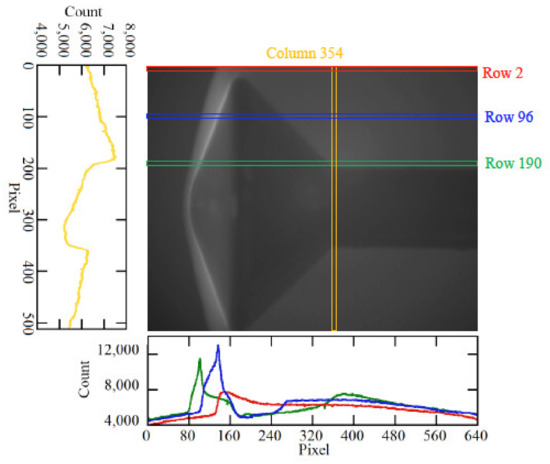
Figure 34. Spatial distribution of IR radiation intensity at 7.6 km/s (from [33]).
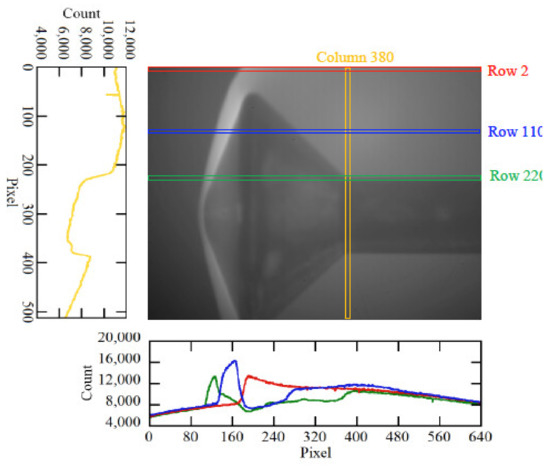
Figure 35. Spatial distribution of IR radiation intensity at 5.5 km/s (from [33]).
5.3. X2
Different test campaigns [34,35,36,37] have been carried out at the University of Queensland, in the X2 expansion tube, dedicated to radiation measurements into Mars mixture atmosphere. In [34,35] tests have been performed for a Mars atmosphere (96% CO2, 4% N2), at a shock speed of 8.6 km/s, and a free stream pressure of 0.1 Torr. Test data have been numerically reconstructed using NEQAIR and comparisons between numerical predictions and experimental data can be seen in Figure 36. Radiation measurements were focused on CN violet band system.
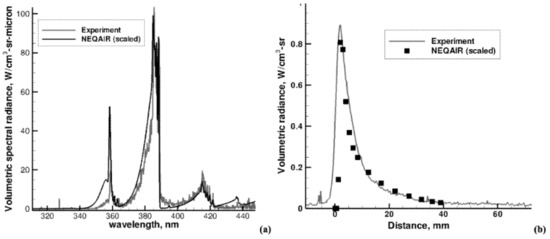
Figure 36. Comparison of NEQAIR calculations and X2 test data: (a) volumetric spectral radiance between 310 and 450 nm; (b) volumetric radiance along stagnation line (from [34]).
Experimental results obtained for close conditions (same pressure and shock velocity of 8.7 km/s) have been compared with EAST data [34]. This is displayed in Figure 37 for the spectral wavelength radiance and in Figure 38 for the power density.
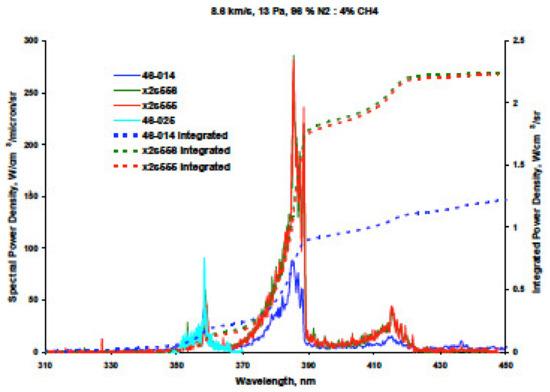
Figure 37. Wavelength comparison between EAST and X2 for Mars conditions (datasets from X2 are started by x2 in the legend) (from [34]).
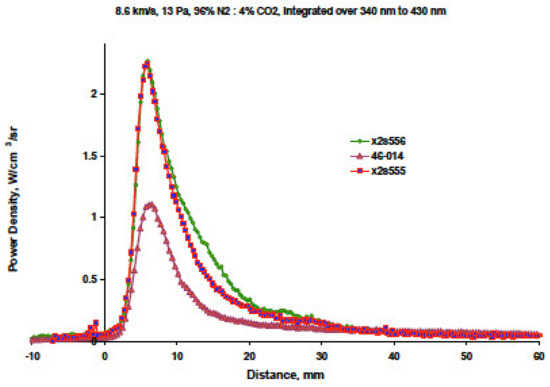
Figure 38. Power density comparison between EAST and X2 for Mars conditions and 0.1 Torr (datasets from X2 are those with the name starts by x2 in the legend) (from [34]).
Other similar conditions with a shock velocity higher than 8 km/s have been investigated in [37]. Test conditions are reported in Table 2 and corresponding results in Figure 39. Measurements were again concentrated on the CN violet system.
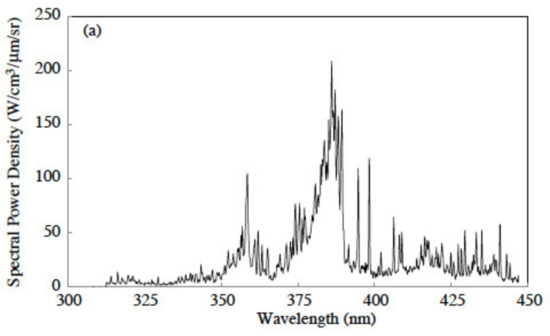
Figure 39. Spectral power density for Mars gas expansion tube study (from [37]).
Table 2. Test in X2 for a Mars-like mixture (96% CO2, 4% N2): Calculated free stream conditions in [37].

In [36] tests have been performed at freestream velocities of 2.8, 3.4, and 4 km/s, and spectroscopy measurements focused on CO2 radiation at 4300 nm. The test campaign was performed for studying the NASA MSL mission. The objective was to investigate the afterbody radiating expanding flow, since afterbody radiation is an issue at these velocities. As a consequence, pure CO2 was used for the test, since afterbody radiation is mostly produced by CO2. Test conditions are summarized in Table 3, temporally resolved radiation measurements in Figure 40. Comparisons were performed against numerical calculations performed with NEQAIR for CO2 band radiance.
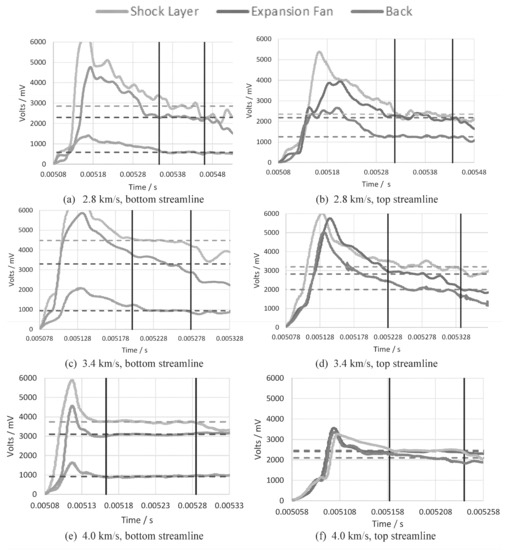
Figure 40. Time-dependent radiation measurements (from [36]).
This entry is adapted from the peer-reviewed paper 10.3390/galaxies9010015
This entry is offline, you can click here to edit this entry!
